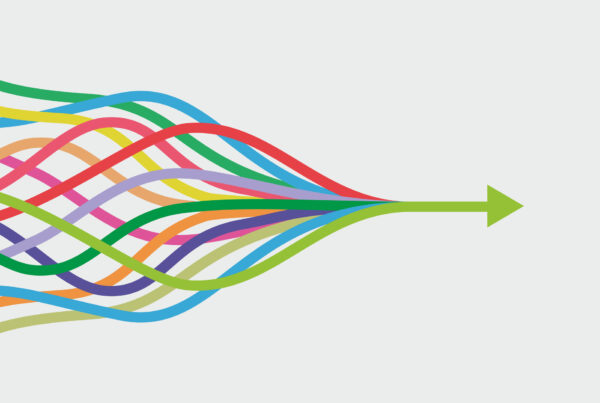Why would IKEA never run an ad campaign for one specific chair?
For starters, whilst some customers would love the chair, most would likely be nonplussed. Even those who adored the chair may have no space for it. At best, a small % of customers will buy the chair.
Any way you look at it, a campaign that focused narrowly on one product would be a long shot. Moreover, the opportunity cost would be enormous; think of the 1000’s of other products that might have caught attention.
So instead, IKEA campaigns tend to promote “the catalogue”. In other words, their marketing teams “bundle” together all of the company’s offering (including multiple specific products, but also its broader style and values) into one monolithic “brand”.
This approach gives them the creative freedom to film their bundled products in moonlit forests, with cuddly bears or lazed on by CGI lions. You know, stuff that gets people’s attention.
Only once they’ve earned some “inbound” attention (proactive visits to their store or website) does the product marketing begin in earnest.
IKEA’s chairs are cool, but they’re not exactly attention-grabbing.
How to spend our advertising budget? On ‘Product’ or ‘Brand’ promotion?
The “product or brand” decision is one that’s loomed large throughout my marketing career. I’ve debated at length:
- Should we promote individual events or complete seasons in the theatre?
- Is it better to promote individual job openings or generic career opportunities?
- Now that we’ve launched a new niche service, shouldn’t we give it headline coverage, over and above our full business pitch?
As is so often the case, there’s usually a split in opinion between those who are primarily mindful of short term revenue (the commercial folk) and others considering long term growth (strategic marketing types like myself.)
It’s absolutely true, as the commercial folk argue, that promoting specific products offers:
- Instant revenue potential (“buy now”)
- Specificity, clarity of offer and authenticity
- New-ness and originality; always attractive!
- An opportunity to bolster the parent brand by association
- Control for the promoter, who directs customers’ attention
…and yet, the risks are significant. Even the most finely tuned audience segmentation and targeting will always spread far wider than the product’s sweet spot.
Uninterested customers are quickly turned off. Plus, with a significant cost attributed directly to one product, profitability can become even more elusive.
By contrast, a broad brand campaign (perhaps one that ‘bundles’ many products into one) offers:
- Freedom to create the strongest possible message
- Value for money (multiple products contributing spend)
- The chance for customers to use their imagination
This last point is critical. Trusting customers’ ability to use their own imaginations, and to be guided by their specific interests, is vital for effective marketing.
Where product campaigns can ‘limit’ the imagination (“oh, they only sell socks”), brand campaigns often ‘expand’ what customers expect to find (“I wonder if they sell socks.”) The latter approach encourages a journey to find the answer rather than cutting off curiosity as it begins.
Curious, investigative customers are far more likely to engage with specific products once they’ve bought in to the initial brand idea.
And if they need a nudge, that’s when product promotion comes back in.
Start with ‘bundled’ brand campaigns, then promote products
Ultimately, there is space and cause for both ‘brand’ and ‘product’ type promotion. The important consideration, then, is when and how to use each one as we move customers through the marketing funnel.
First, in generating new custom, leads or awareness, we should:
- Focus on what best appeals to the customer, without being overly guided by ‘whats in our stock room’.
- Spend 75%+ of promotional budgets (though probably only 25-50% of our time)
- Build campaigns that are wholly targeted on getting customers ‘through the door’.
- Feature curated multi-product or service ‘bundles’ where these serve to illustrate the brand’s full offering.
- Be very wary of promoting losing products (putting your ‘worst foot forward’.)
- Encourage self-guided investigation of products and services.
Then, further down the marketing funnel, we should:
- Trust customers to find their own way through our carefully-designed product shelves (physical or virtual).
- Offer chances for customers to find answers to their questions about specific products.
- Use product promotion sparingly so as not to alienate.
- Spend ~25% of budget (though more like 50%+ of our time and attention, reflecting the breadth and turnover of content requirements.)
- Target carefully with campaigns on social, email and digital channels.
- Utilise new-ness – events, launches, improvements – to bolster understanding of the full product range.
Achieving these ambitions can, of course, be extremely difficult.
The pursuit of revenue drives businesses of all sizes towards product promotion, skipping important steps in the marketing funnel. Too often, hard-sell product promotions are taken directly to cold customers. The result? Alienated customers and wasted ad spend.
It’s hard, though, to justify brand-focused promotional spend that isn’t tied to specific products, especially when revenue needs are acute.
Brand campaigns are frequently tarnished as “spray and pray”, but this overlooks the skill of marketing professionals; its our job to hone in on target customers and design tactics to achieve sales, not to fire wildly into crowds and hope for the best.
In fact, it’s our job to be smarter than the average businessperson. We should be bringing to the table a deeper understanding of our customers and their behaviour. We should be tailoring the promotion of our brands and products to meet customers’ eternal behaviours, not our businesses’ short term needs. The customer is king!
So, brand or product? It’s nuanced, but I’ll leave you with this:
Want to sell chairs? Think like IKEA. Start your promotion far, far away from the product. Prioritise the generation of curiosity.
In other words, fancy a dance…?



